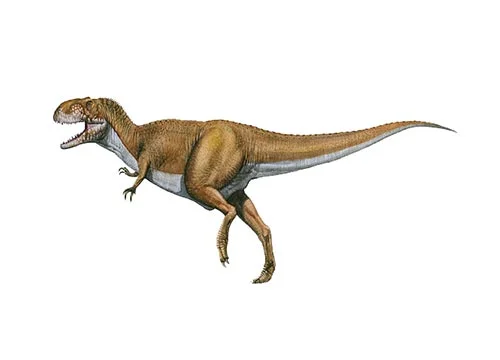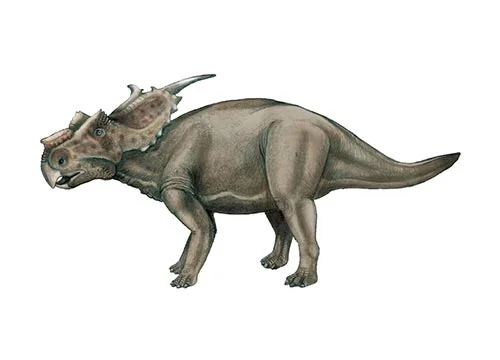Barosaurus (heavy lizard)

Bar-roe-sore-us
Othniel Charles Marsh - 1890
Herbivore
Estimated 25-30 meters long
Sauropod
B. lentus (type)
Tanzania, USA, including the states of Colorado, Oklahoma, South Dakota, Utah and Wyoming - Morrison Formation
Late Jurassic, 155-145 million years ago
Barosaurus Facts
Barosaurus, meaning “heavy lizard” in Greek, was one of the largest dinosaurs known to have lived. Some estimates suggest that this species could have reached lengths of up to 30 meters and weighed as much as 75 tons, making it one of the largest land animals to have ever lived.
Despite its massive size, Barosaurus was a gentle giant and a herbivore, subsisting on a diet of plants and leaves. Its long neck allowed it to reach high into the trees to feed, while its sturdy legs and large body allowed it to support its weight on land.
One of the most interesting things about Barosaurus is its anatomy. This dinosaur species was characterized by its long neck, which was made up of 15 to 17 vertebrae, and a long tail, which helped to balance its massive body. Additionally, it had a small head with relatively small teeth, suggesting that it was not capable of chewing its food and instead relied on the fermentation of its gut to break down tough plant material.
Barosaurus is also of interest to paleontologists because of the well-preserved fossils that have been found. These fossils provide important information about the anatomy and lifestyle of this dinosaur species, and help to shed light on the evolution of sauropod dinosaurs and the ecology of the late Jurassic period.
In conclusion, Barosaurus is a fascinating and awe-inspiring dinosaur species that provides important insights into the evolution of sauropods and the ecology of the late Jurassic period. Whether you’re a seasoned paleontologist or just starting to learn about dinosaurs, Barosaurus is sure to captivate your imagination and inspire your interest in the field of paleontology.



